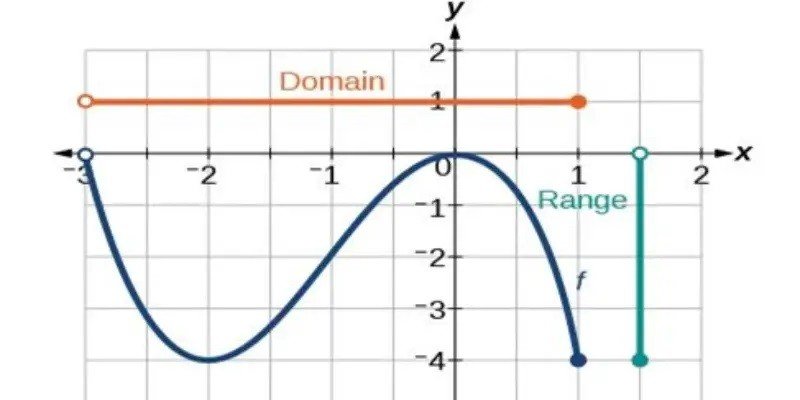Which Describes The Range Of The Parent Absolute Value Function?

The parent absolute value function has a range that includes all real numbers. This function extends from negative infinity to positive infinity, covering the entire real number line.
The parent absolute value function is a basic mathematical function that represents the distance of a number from zero. It is denoted as |x|, where x is any real number. The range of this function includes all real numbers because the absolute value of any real number is always positive or zero.
Therefore, the range of the parent absolute value function extends from negative infinity to positive infinity, including every possible value on the real number line. This makes it a versatile function used in various mathematical and real-world applications.

Credit: www.screendaily.com
Understanding The Absolute Value Function
What Is The Absolute Value Function?
The absolute value function is a mathematical function that returns the non-negative value of a number, disregarding its sign. It is denoted as |x|, where ‘x’ represents the input value. This function essentially gives the distance of ‘x’ from zero on a number line.
Whether ‘x’ is positive or negative, the absolute value function always returns a positive value or zero.
Definition And Notation
- The absolute value function is defined as follows:
- For non-negative numbers, the absolute value of a number is the number itself: |x| = x
- For negative numbers, the absolute value is the opposite of the number: |x| = -x
- The notation used for the absolute value function is a pair of vertical bars enclosing the input value. For example, |2| represents the absolute value of 2.
Graphical Representation
- The graph of the parent absolute value function is a v-shaped curve, with its vertex at the origin (0,0).
- The slope of the graph is positive to the right of the origin and negative to the left.
- The line of symmetry is the y-axis (x = 0).
- The absolute value function graph is symmetric with respect to the y-axis, meaning that if the x-coordinate of a point is ‘a’, then its corresponding point on the other side of the y-axis would have an x-coordinate of ‘-a’.
- The graph never intersects or goes below the x-axis.
Understanding the absolute value function is crucial in various mathematical applications, particularly in solving equations, inequalities, and analyzing real-world scenarios where distance is involved. By comprehending its definition, notation, and graphical representation, we can confidently utilize the absolute value function in different mathematical contexts.
The Range Of The Parent Absolute Value Function
Identifying The Range Of The Absolute Value Function
The range of the parent absolute value function refers to the set of all possible output values or y-values that the function can take. When analyzing the range, we consider the shape and behavior of the function. Here’s how we can identify the range of the absolute value function:
Natural Range Of The Parent Function
- The parent absolute value function is represented by f(x) = |x|. Its graph is a v-shaped curve that opens upwards.
- The range of the parent absolute value function is all real numbers greater than or equal to zero. This means that the function can only produce positive or zero values as outputs.
Using Inequalities To Determine The Range
When working with transformations or modifications of the parent absolute value function, we can use inequalities to determine the range based on the given conditions. Here’s how:
- If the absolute value function is multiplied by a positive constant, the range remains the same as the parent function.
- If the absolute value function is multiplied by a negative constant, the range is reflected or flipped, resulting in negative outputs.
- If any addition or subtraction is applied to the absolute value function, the range can shift upwards or downwards, but the positive outputs remain unchanged.
- By combining these transformations, we can determine the range of more complex absolute value functions.
Remember, the range of an absolute value function always includes zero and extends infinitely in either a positive or negative direction. By understanding the behavior and applying transformations, we can identify the range of various absolute value functions.
Exploring The Boundaries Of The Range
Analyzing the behavior at the boundaries:
- When examining the parent absolute value function’s range boundaries, we must consider both positive and negative values. This allows us to understand the behavior of the function as it approaches and extends beyond these limits. Below are some key points regarding the behavior at the boundaries:
- For positive values of the function, the range extends upwards, resulting in positive y-values. As x approaches positive infinity, the function also approaches positive infinity. Conversely, as x approaches negative infinity, the function approaches negative infinity.
- As x approaches zero from the right, the function equals zero, resulting in a y-value of zero. Similarly, as x approaches zero from the left, the function equals zero, indicating a y-value of zero.
- Overall, the parent absolute value function displays a v-shaped graph that opens upwards. It is symmetrical around the y-axis, passing through the point (0,0).
Understanding the endpoints of the range:
- The endpoints of the range for the parent absolute value function help us identify the maximum and minimum values. Here’s what you need to know:
- The minimum value, or the lowest point on the graph, is always 0. This occurs at the vertex of the function, which is where the v shape’s point is located.
- The maximum value, or the highest point on the graph, does not exist because the function extends infinitely upwards as x increases without bound.
- In other words, the function has a minimum value of 0 but no maximum value.
Graphical interpretation:
- The graph of the parent absolute value function provides valuable insights into its range. Consider the following points:
- The upward-opening v shape of the graph represents the function’s range. It extends indefinitely upwards without reaching a maximum value.
- The vertex of the graph, located at the origin (0,0), indicates the minimum value of the function, which is 0.
- The graph is symmetric with respect to the y-axis, meaning the function has the same absolute values for corresponding positive and negative x-values.
- By visually examining the graph, we can infer that the range of the parent absolute value function includes all real numbers greater than or equal to 0.
Remember, a thorough exploration of the boundaries of the range of the parent absolute value function helps us understand its behavior, endpoints, and graphical interpretation. Whether it’s analyzing how the function behaves at positive and negative infinities or interpreting the graph’s characteristics, delving into these aspects deepens our understanding of this fundamental mathematical function.
Frequently Asked Questions On Which Describes The Range Of The Parent Absolute Value Function?
What Is The Parent Absolute Value Function?
The parent absolute value function is a basic form of the absolute value function, represented as f(x) = |x|.
How Does The Parent Absolute Value Function Behave?
The parent absolute value function behaves like a “v” shape, with the vertex at the origin (0,0).
What Is The Range Of The Parent Absolute Value Function?
The range of the parent absolute value function is all real numbers greater than or equal to 0.
Can The Parent Absolute Value Function Have Negative Values?
No, the parent absolute value function cannot have negative values because absolute values are always non-negative.
Does The Parent Absolute Value Function Have A Maximum Value?
No, the parent absolute value function does not have a maximum value because it continues infinitely upwards.
Conclusion
To summarize, understanding the range of the parent absolute value function is crucial in solving various mathematical equations and inequalities. By analyzing its graph, we can determine that the range of the parent absolute value function is always greater than or equal to zero.
This means that the function can output non-negative values but never negative values. With this knowledge, we can confidently solve equations and inequalities involving absolute value functions with ease. Moreover, by recognizing the characteristics of the parent absolute value function, such as its v-shape and symmetry, we can quickly identify the range of transformed absolute value functions as well.
This understanding is particularly useful when studying piecewise functions or when solving real-life problems where absolute values are involved. Overall, comprehending the range of the parent absolute value function is essential for any student or enthusiast of mathematics. By grasping this concept, we can navigate and solve various functions more efficiently and accurately, expanding our abilities in the world of mathematics.
